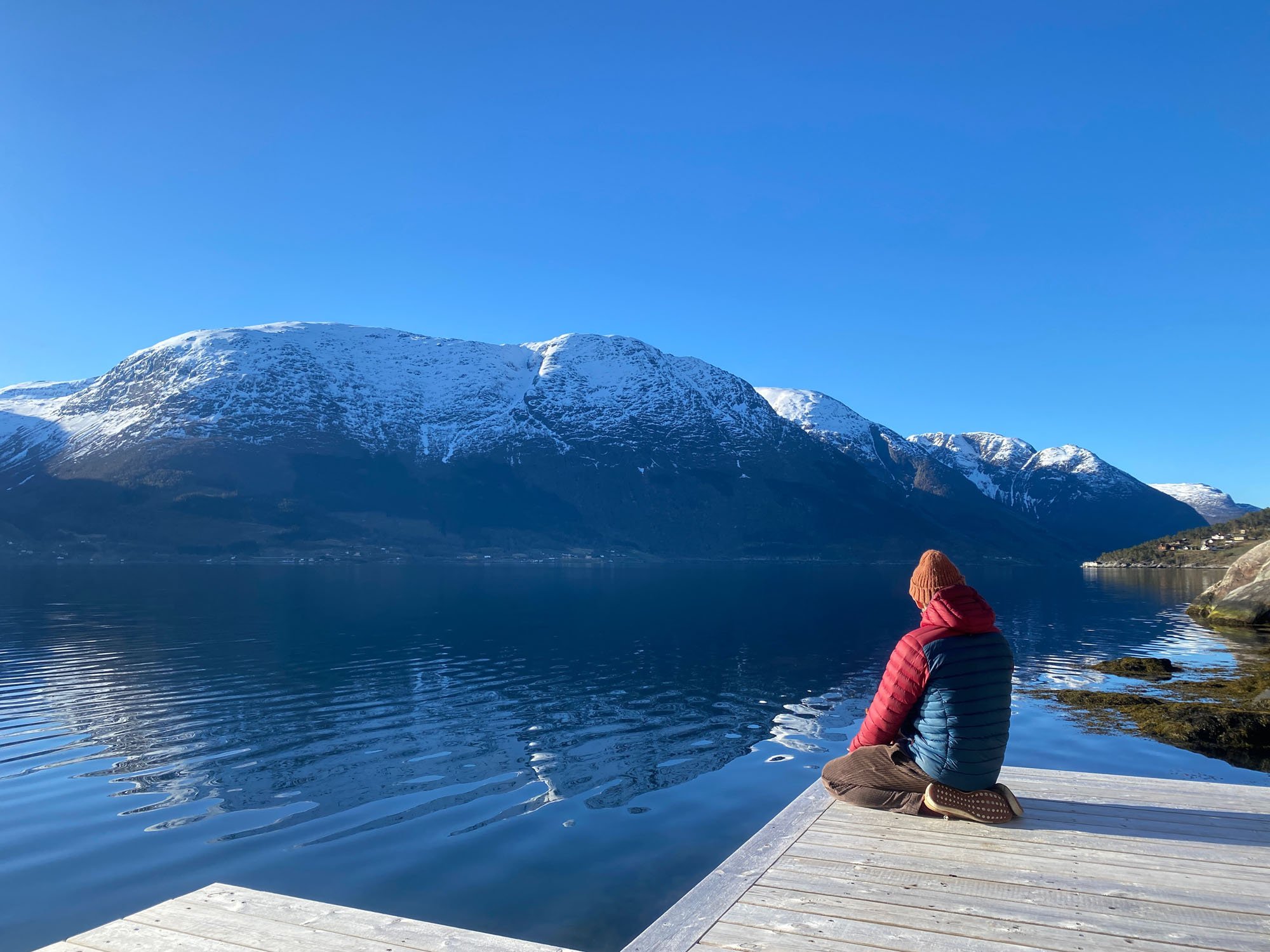Norwegian residency: discovering the Kubbestol
Image: @orjandjonne
In mid-April Gareth was invited by professor of design Ørjan Djønne at the University of Bergen for a two-week residency in conjunction with their public art programme, STUDIO at KMD. During the two-week residency, immersed in the heart of the breathtaking Norwegian fjordlands, Gareth became inspired by the traditional ‘Kubbestol’, a chair hewn from a single solid trunk. These 'dug out' chairs hold a distinctive place within Scandinavian folk art, connecting people, process and place through material heritage.
Gareth was drawn to the Kubbestol for its reflections to his recent Of Cuts range and the similarities in carving away a form from a single log. The design also provoked Gareth to reflect on the work of the untrained maker as simply a person with a need for a chair, sculpting an available and appropriate piece of material into something functional. It is perhaps the most rudimentary and elemental design you could think of if faced with nothing more than a fallen tree and an axe.
Gareth decided to undertake 3 projects within the 2 weeks residency:
Kubbestol 1.0 The first was to carve a traditional Kubbestol out of a solid log of chestnut.
Kubbestol 2.0 Gareth designed a contemporary modern Kubbestol with, a humble but contemporary chair made from spalted birch, with a combination of traditional coppering techniques ( a highly skilled craft used to make water-tight containers) and CAD software
Kubbestol 3.0 The third was to employ AI (artificial intelligence) to create 100 images of chairs by asking the tool to interpret the evolution of the chair from a primitive carved log through to the more refined stickback and Windsor chairs we know so well.
“I can't wait to try and make some of these ideas as they are rich with story and beauty, capturing the naivety of these early chairs with the very same primitive design skills that makes Welsh stick back chairs and the Kubbestol so appealing.” Gareth
Drawing inspiration from the traditional use of birch, abundant in the forested regions of Norway, the aim was to align the contemporary version with the historical essence of the craft.
Here is visual representation of some of the outcomes of the residency:






















